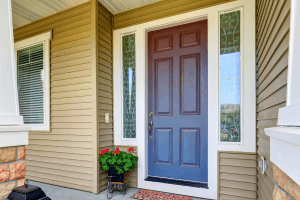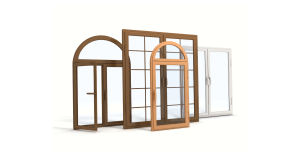Fixed casement windows are the preferred option for modern homeowners looking for beautiful, secure, and energy efficient windows. Double-hung windows offer similar benefits, but are more common with traditional, cottage-style homes.
Here are a few differences between the two window styles:
Construction
Double-hung windows are quite versatile and come in a range of designs. These windows feature two movable sashes – a top and bottom one – that slide up and down to meet your ventilation needs. They can also tilt inwards for easy cleaning from the inside. Casement windows are hinged on one side and open like a door using a crank that is fixed on the inside.
Operation
Both window designs are easy to operate. For double-hung windows, most homeowners prefer to slide the bottom sash up and down while the top sash remains closed. These windows feature a spring-loaded balance that helps to open the bottom sash, while gravity helps to close it. To open casement windows, you simply turn the lever and push the window outwards.
Efficiency against drafts
Double-hung windows are designed to fit snugly in the side tracks, leaving no room for air intrusion. However, you should ensure that a good seal is used along the top to keep drafts out. Casement windows provide excellent protection against air intrusion because the window sash presses tightly onto the window frame when closed.
Care and maintenance
Both sashes of double-hung windows can tilt inwards for easy cleaning of all sides from the inside, but you need to adjust them properly afterwards to avoid drafts. This is particularly helpful when cleaning windows on the top floors. However, it can be a bit challenging to clean the screen that is fixed outside the window.
The exterior of casement windows can only be cleaned from outside the building, which may require you to use a ladder. However, screens are easier to clean as they are fitted on the inside. During routine cleaning, you may need to occasionally check and tighten the mechanical lever, as well as the multi-point locking system – if installed.
Ideal use
Double-hung windows are energy efficient, can be used in combination with other window styles, and can be installed in areas with limited space or obstacles on the exterior as the sashes move up and down as opposed to outwards. They are also more secure, as you can open the top sash and keep the bottom one closed if you have small children. Casement windows are, however, more energy efficient, less prone to drafts, and easier to maintain.
Which one is right for you?
High quality windows from reputable manufacturers, whether fixed casement or double hung, can be highly energy efficient if professionally installed. When purchasing new windows, you only need to identify the infiltration rating that best fits your needs and choose a design that complements your home.

